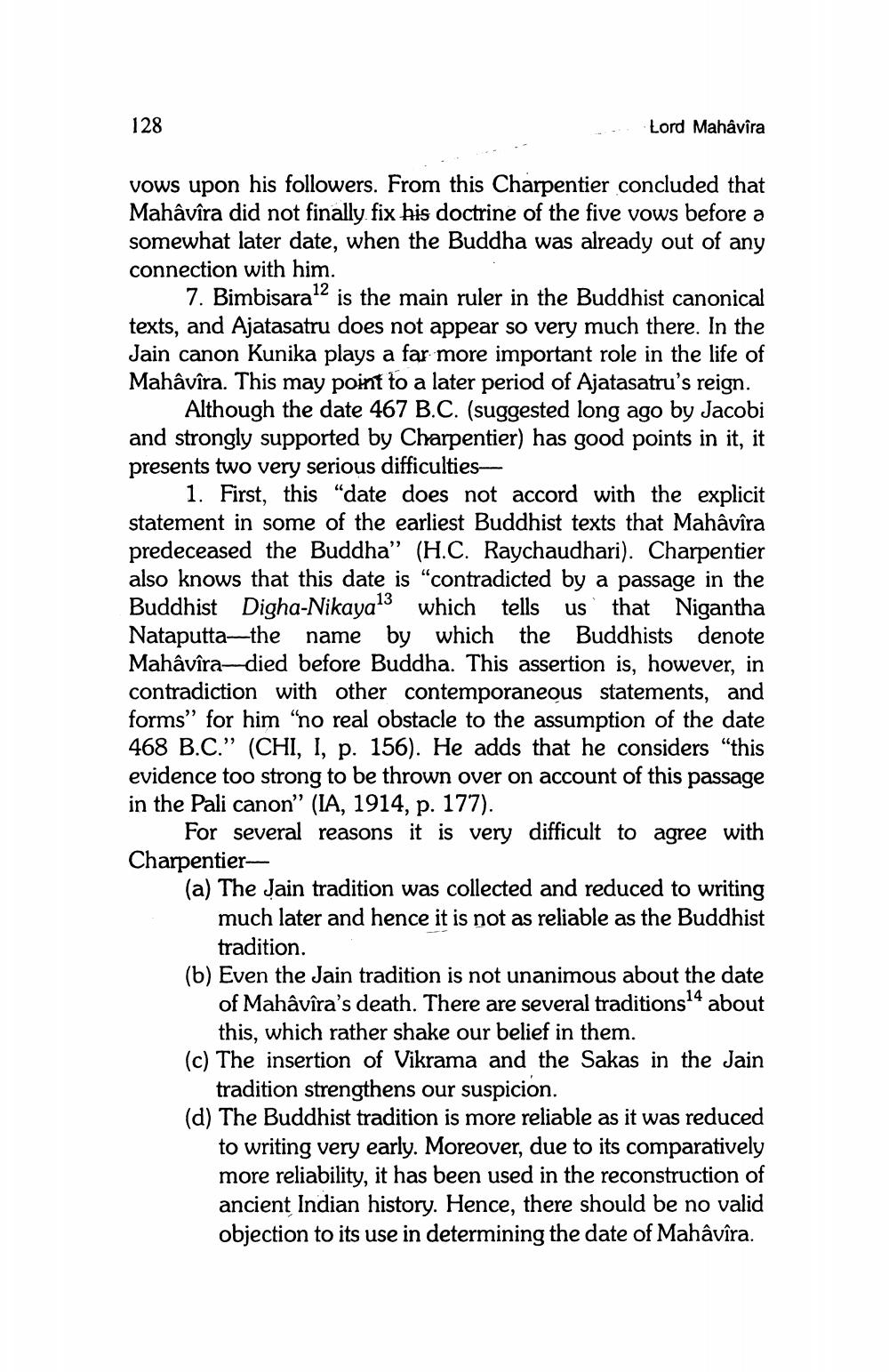________________
128
Lord Mahavira
vows upon his followers. From this Charpentier concluded that Mahâvîra did not finally fix his doctrine of the five vows before a somewhat later date, when the Buddha was already out of any connection with him.
7. Bimbisarala is the main ruler in the Buddhist canonical texts, and Ajatasatru does not appear so very much there. In the Jain canon Kunika plays a far more important role in the life of Mahâvîra. This may point to a later period of Ajatasatru's reign.
Although the date 467 B.C. (suggested long ago by Jacobi and strongly supported by Charpentier) has good points in it, it presents two very serious difficulties
1. First, this "date does not accord with the explicit statement in some of the earliest Buddhist texts that Mahâvîra predeceased the Buddha” (H.C. Raychaudhari). Charpentier also knows that this date is "contradicted by a passage in the Buddhist Digha-Nikayal3 which tells us that Nigantha Nataputta—the name by which the Buddhists denote Mahâvîra-died before Buddha. This assertion is, however, in contradiction with other contemporaneous statements, and forms” for him “no real obstacle to the assumption of the date 468 B.C.” (CHI, I, p. 156). He adds that he considers “this evidence too strong to be thrown over on account of this passage in the Pali canon" (IA, 1914, p. 177).
For several reasons it is very difficult to agree with Charpentier
(a) The Jain tradition was collected and reduced to writing
much later and hence it is not as reliable as the Buddhist
tradition. (b) Even the Jain tradition is not unanimous about the date
of Mahâvîra's death. There are several traditions14 about
this, which rather shake our belief in them. (c) The insertion of Vikrama and the Sakas in the Jain
tradition strengthens our suspicion. (d) The Buddhist tradition is more reliable as it was reduced
to writing very early. Moreover, due to its comparatively more reliability, it has been used in the reconstruction of ancient Indian history. Hence, there should be no valid objection to its use in determining the date of Mahâvîra.




